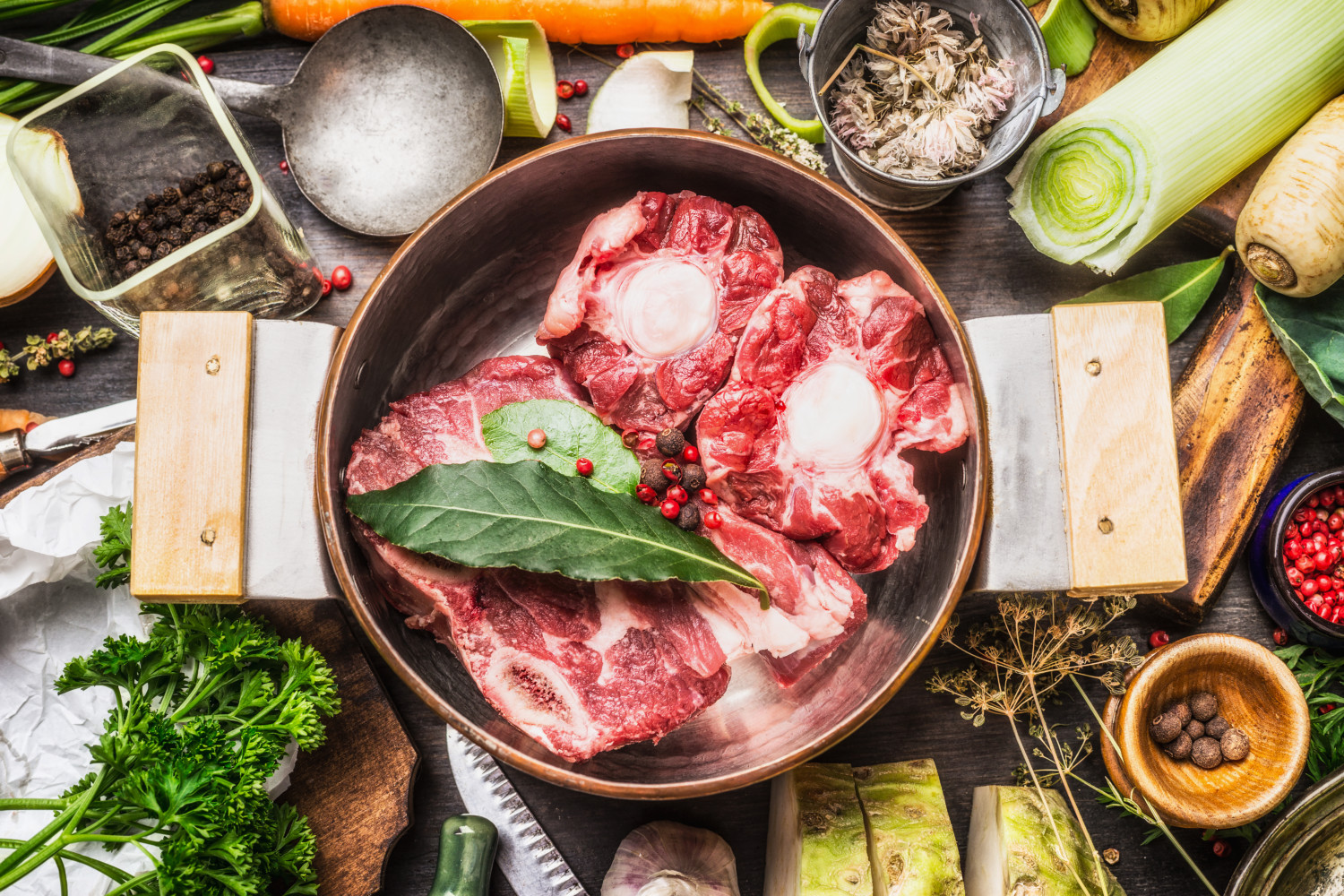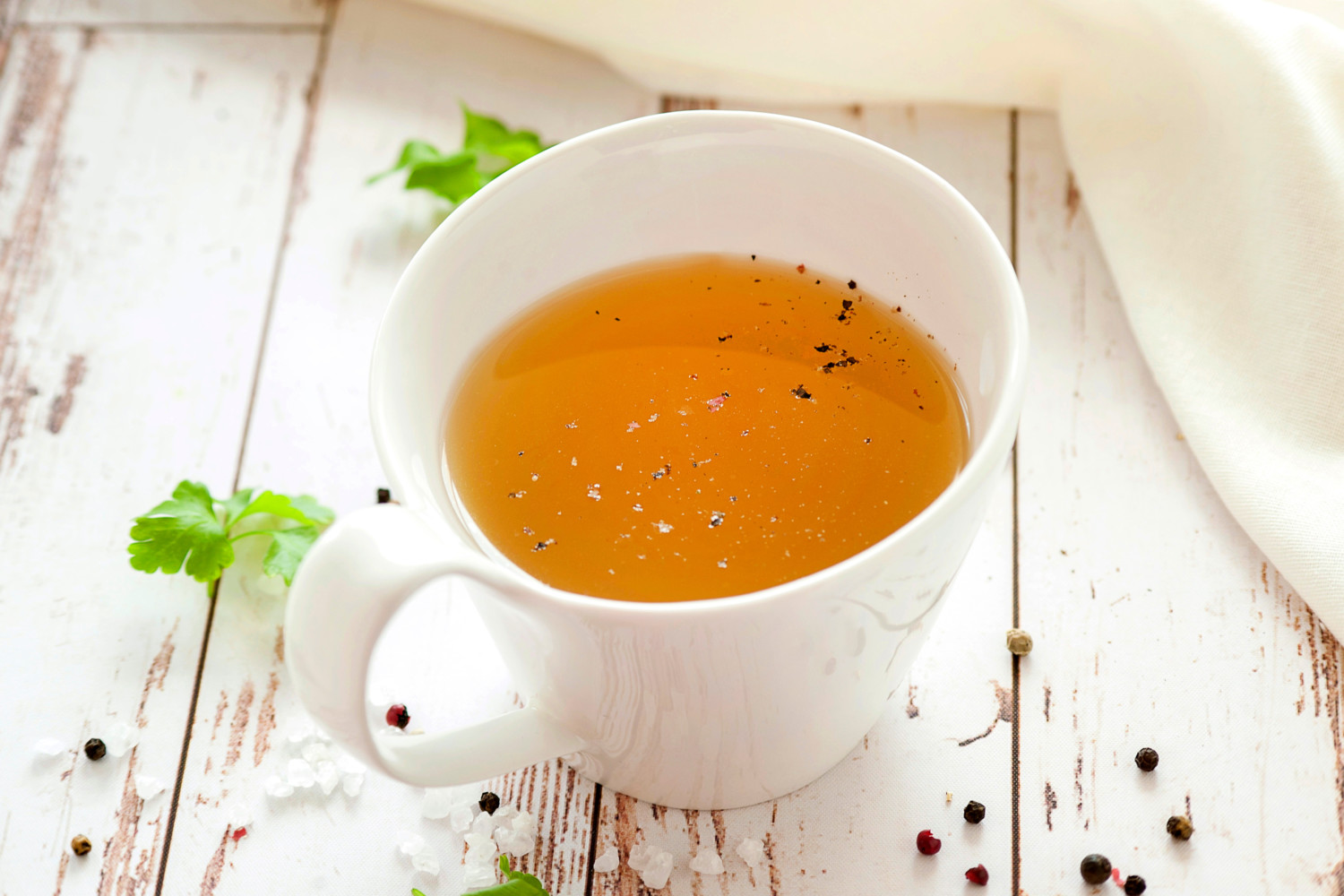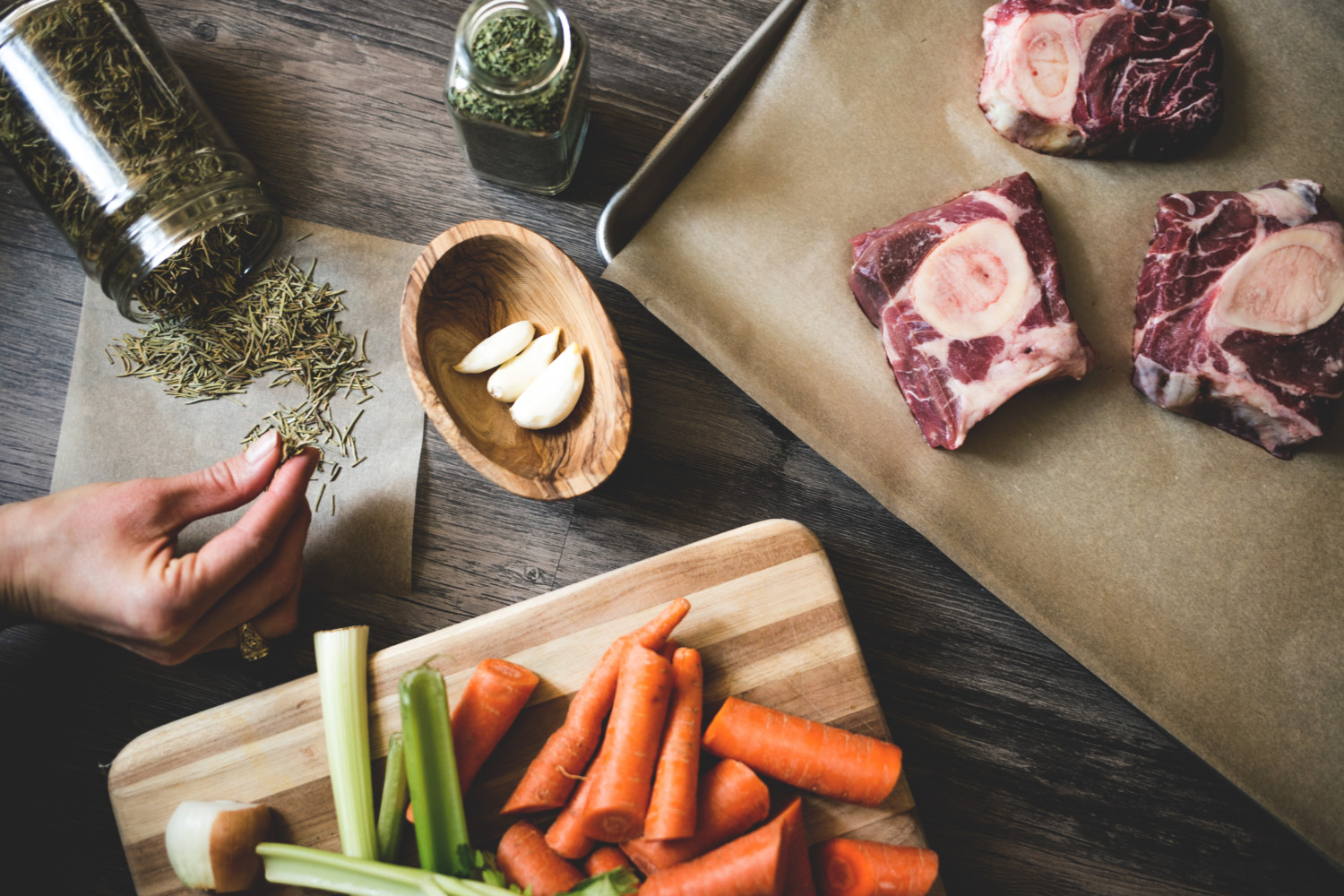Bone broth has surged in popularity. People who observe a keto or paleo diet, those who practice intermittent fasting, and others in health-conscious communities can often be seen sipping a mug of the steamy liquid. Influencers have also encouraged social media followers to incorporate it into their diets. But is bone broth good for you?
Learning about how bone broth is made, its nutritional value, and how you can use it can help you decide if it is worth adding to your kitchen.
What Is Bone Broth?
Bone broth results from boiling animal bones and connective tissue. The term “bone broth” is often used interchangeably with “stock,” the liquid used as the base for many recipes, such as chicken noodle soup or ramen — and with good reason.
“Bone broth is essentially stock,” Marco Canora, chef of Hearth and Brodo in New York, told Bon Appetit. “Three to five years ago, because of the wellness and paleo trends, stock started being called bone broth.”
However, he notes that bone broth is generally richer and thicker than most traditional stock.

The thickness of bone broth comes from the way it is made. While stock is made with more actual meat, bone broth starts with bones stripped of the meat. It also has an exceptionally long cooking time. Collagen from the connective tissue breaks down during prolonged cooking.
Cold bone broth should at least be partially gelled. This means that it has a high protein content, giving it a richer consistency and a hearty, appealing mouthfeel.
You can buy bone broth at the grocery store or make it at home from scratch. It is savory, satisfying and comforting, but is bone broth good for you? It does have many nutritional benefits.
Is Bone Broth Good For You?
While more research needs to be done and some experts say bone broth is not a good source of minerals if made from just bones without connective tissues attached, there are several micronutrients present in bone broth that can support good health.
“Micronutrients are the tiny vitamins, minerals, and other compounds that act as regulators and building blocks for the molecular machinery of our bodies,” Dr. Casey Means, physician and co-founder of metabolic tracker Levels, told RealSimple. “When we eat, we should be on a micronutrient hunt to get a diverse and adequate array. Bone broth provides many of these.”
For instance, animal bones are high in the following minerals.
- Calcium, which supports strong bones and teeth, blood clotting, muscle contraction, regulating heart rhythms and improving nerve function.
- Magnesium, which helps regulate muscle and nerve function, blood glucose and blood pressure.
- Potassium, which is required by all tissues in the body.
- Phosphorus, which is a component of cell membrane structure and the body’s fundamental energy source.

Bone broth can be a source of glycine and proline, which are two important amino acids that your body already makes. Taking more in can help rebuild the collagen in your own body. Glutamine, which the body uses for cellular energy and improved gut health, is another amino acid in bone broth.
Bone broth is high in protein and provides vitamin A, vitamin K2 and omega-3 and omega-6 fatty acids. Overall, ingredients in bone broth may be beneficial to brain, gut, metabolic and skin health and support healthy bones and joints.
How To Make Bone Broth
Although it does require a time investment, homemade bone broth is simple and inexpensive to make. Starting with collagen-rich bones is essential. According to Food Network, knucklebones and chicken feet provide the most collagen per pound. Joint, feet and marrow bones are all excellent options, and the Forked Spoon recommends adding meaty bones like oxtail, shank or short ribs for deeper flavor.
Once you have the bones, blanch them by putting them in cold water, bringing them to a boil and simmering for 20 minutes to remove impurities. This minimizes the skimming required later.

Next, roast the bones, as detailed by Bon Appetit, to caramelize them and add even more flavor. Some pros recommend rubbing with tomato paste first, then roasting at 400 F on a sheet pan for about 45 minutes until they have deep brown areas.
Cover the bones with water in a deep pot and add a few aromatics, such as garlic, onions and black pepper. Keeping the additions to a minimum will result in a focused, concentrated flavor.
The broth will need to simmer for 12 to 48 hours. Check periodically to ensure you have enough liquid. If you prefer, you can make the broth in a slow cooker.
Once it is done, strain the broth into a container through a fine-mesh sieve. Allow it to cool to room temperature before refrigerating. You can store it in the refrigerator for up to five days or freeze the bone broth for up to three months.
Bone Broth Uses
One way to use bone broth is in homemade soup recipes. In addition, you can use it as the liquid for rice, quinoa or other grains or the base for sauces. There are even savory smoothie bowl recipes you could try.
Pour bone broth into an ice cube tray to have small amounts at the ready for months to come, or share it with your whole family.

Perhaps the most popular way to enjoy it is to sip warm bone broth straight from a mug, just as you would coffee or hot tea. If desired, season with herbs and spices, or enjoy it heated up as-is. However you like it, bone broth can be a delicious addition to any diet.
This story originally appeared on Simplemost. Checkout Simplemost for additional stories.


